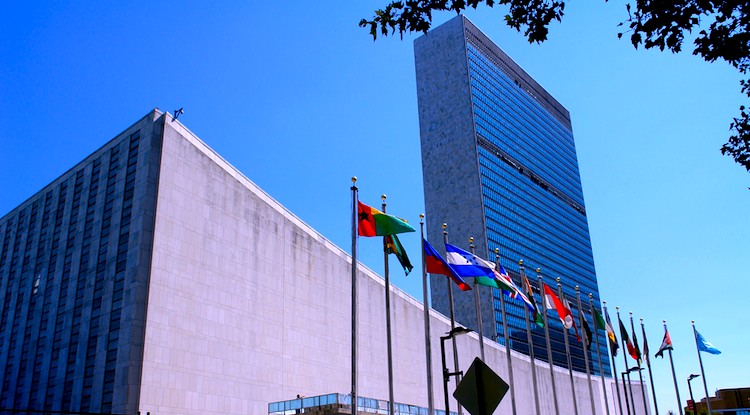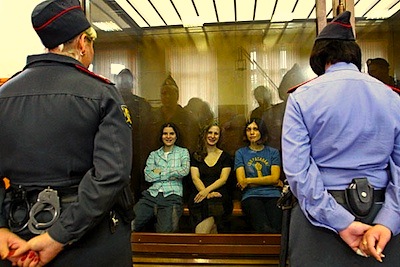
[Editor’s note: the post below appears today on the front page of The Huffington Post.]
By Govindini Murty. As we celebrate the holidays, many of us are taking digital photos and videos of our loved ones, thinking that these digital files will be saved forever. The same thinking applies to our movies, books, songs, and stories – we save all of our creative works to the digital cloud, assuming they will be safely stored there. But between continual tech upgrades that make our digital files obsolete, and UN agencies that now seek to censor the internet, the question must be asked: are any of our cultural memories really safe in the digital age?
Recent developments are making it clear that control of digital information, and in particular of online artistic content, is the new front in the twenty-first century war of ideas. The UN’s International Telecommunications Union recently voted to allow individual nations to censor the free flow of the internet. This move was welcomed by authoritarian governments like China, Iran, Saudi Arabia, and Russia – and condemned by democracies like the U.S., the U.K., Canada, and Australia.
Combine this alarming development with the fact that many people now store their photos, videos, writing, and other creative works in online clouds, without ever creating hard copies or backing up their data – and the result is the potentially explosive ability of authoritarian forces to erase vast areas of our cultural memory at the push of a button. Without physical copies, no longer does a dictator have to go to the trouble of staging public burnings of art and books, as in 1930s Nazi Germany or 15th century Florence under Savonarola.

The freedom of the individual artist to speak out is more important now than ever, as today’s authoritarian nations seek to silence artists at every opportunity. Russia’s jailing of the women’s punk rock group Pussy Riot, China’s jailing of dissident artist Ai Weiwei, and Iran’s jailing of filmmaker Jafar Panahi are all examples of modern autocracies crushing citizens’ rights to creative expression. Apparently nothing is more threatening to today’s political fanatics than a free, creative individual.
And now the UN is going to give these authoritarian nations official sanction to censor the online work of artists, filmmakers, writers, and creative thinkers. This is a worldwide cultural catastrophe in the making.
Yet this isn’t the only danger that faces the preservation of our cultural memories; a new form of techno-utopianism poses a serious challenge to the preservation of our creative works. The problem in technologically advanced cultures like America is that we sometimes value technology for its own sake more than we do content. We equate advanced technology with greater value, so we rush to upgrade software, devices and formats without making any corresponding effort to ensure that prior digital files and formats can still be used.

Obviously it’s important that we progress technologically. As a filmmaker I embrace digital filmmaking tools for their ability to democratize the movies, and as a writer I wouldn’t even be writing this post if it weren’t for the freedom of speech enabled by the internet. But as the digital revolution matures, we must give thought to how we manage and protect the enormous new quantity of digitally-created works.
This holiday season we’re celebrating blockbuster movies like Les Misérables and The Hobbit, but the irony is that these films are based on classic novels by Victor Hugo and J.R.R. Tolkien that were written in the pre-digital age – and are still around today because they’ve been widely distributed in paper hard copies. But what about fresh artistic and literary works created today? Where will they be fifty or a hundred years from now if they only exist in digital form? Even if they are classics, who will have the chance to adapt them into tomorrow’s movies or other, future forms of storytelling if they are erased within a few years by government censors – or are unreadable because tech companies have upgraded tablets/e-readers to the point that they can’t read prior digital books?
Our iPhones and iPads are obsolete within two or three years, files saved on external drives often can’t even be read five years later, hard drives crash, memory cards fail, and continual software upgrades make computers even just a few years old practically inoperable. So why do we assume that matters will be any different with our movies, photos, and songs – in short, all of our cultural memories?
Keanu Reeves’ fascinating documentary Side by Side (2012), directed by Chris Kenneally and produced by Justin Szlasa, is one of the best examinations I’ve seen of the digital revolution’s impact on the art of the movies. (As a positive outcome of digital technology, you can see the film on Amazon VOD.) What I appreciate about Side by Side is that it turns to our leading filmmakers to ask them what the digital revolution means for storytelling. The film interviews over seventy notable film directors, editors, and cinematographers – from Martin Scorsese, George Lucas, James Cameron, and David Fincher to Walter Murch, Anne Coates, Vittorio Storaro, and Michael Ballhaus.
Side by Side speculates as to whether our digital moviemaking output will potentially be unreadable in the near future due to the escalating pace of technological change. As Michael Goi, recent President of the American Society of Cinematographers, points out in the film, there have been more than eighty video formats to date – and many of them cannot even be read today. By contrast, archivist Ed Stratmann of George Eastman House notes that he can still take out a film reel from 1895 and play it on a film projector today.
The same is true for paper books. One can hold up any book from a decade ago or a century ago and still be able to read it. Isn’t there a virtue to this kind of simplicity? Shouldn’t good technology consist in allowing people to focus on ideas and content – rather than on the expensive, soon-to-be-obsolete devices that deliver the content? And what will happen when all of our books are digitized and the original paper copies are discarded – as is already happening in libraries worldwide?
George Lucas deserves much credit for promoting the digital filmmaking revolution, and he expresses optimism in Side by Side that there will be a solution to archiving and readability issues:
“All of everything in the whole world is stored digitally. Yeah, so there’s problems with it – but they’re going to solve those problems. I’ll guarantee that. There’s too much digital information out there not to figure out a fool proof way to store it forever.”
I hope Lucas is right, because the move to digital seems irrevocable, but I’ve yet to see viable solutions offered to filmmakers and other creative people to allow them to save their work and migrate their data to new software and new formats every couple of years.
The digitizing of cultural output and its storage online is giving governments, U.N. agencies, and tech companies unprecedented ease of censorship. There is a potential for intellectual and creative repression on a worldwide scale that George Orwell or Ray Bradbury could only have dreamed of when they envisioned the dystopian societies of 1984 and Fahrenheit 451.
As Martin Scorsese says in Side by Side of the potential erasure of our digital creative works:
“That’s a danger, I think, in the continuation of our culture. What do you go back to when you need to go back to the well? Where do you get the nourishment culturally, artistically, intellectually? Where do you get it?”
The irony seems to be that the more we remember, and as the quantity of digital technology grows, the more we are in danger of forgetting.
So as you celebrate this holiday season, be sure to save your digital memories by printing them out or backing them up. And beyond that, do everything you can to speak out for internet freedom. It’s the best safeguard today for the rights of filmmakers, artists, dissidents, and storytellers to create and share the cultural memories that we live by.
Posted on December 24th, 2012 at 11:27am.
Last spring the local newspaper ran an article about the approaching deadline for movie theaters to convert to digital projection since Hollywood was looking forward to stop distribution of actual film copies of their movies. I blogged about it then http://onthenorthriver.com/2012/04/01/digitally-converted-by-hollywood/ and still worry about it now.
At even the bargain price of $50,000 for digital, how many small theaters, churches, and community centers will be able to continue to show films after their first run?
What about foreign films, are they going to adopt the same data format as Hollywood or are we going to continue the idiocy of Regions? Or worse, introduce their own standards of data encoding and physical interface?